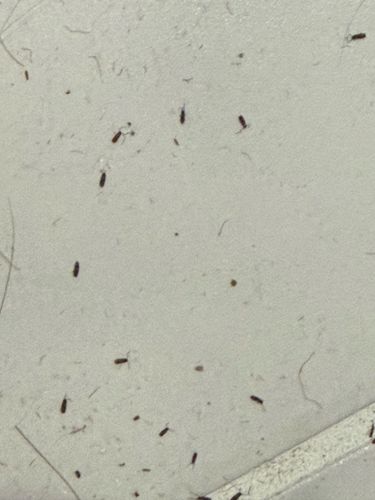Mold Mites / Dust Mites (less likely to be specifically dust mites based on visual, more likely mold mites or psocids)
Scientific Name: Various species (e.g., Tyrophagus putrescentiae for mold mites; order Psocoptera for booklice/psocids)
Order & Family: Acari (mites); Psocoptera (booklice/psocids)
Size: 0.2 - 0.8 mm

Natural Habitat
Damp, humid environments with mold, fungi, or organic debris. Often found in kitchens, bathrooms, basements, and areas with food storage or water damage. Booklice (Psocoptera) are also common in similar damp environments, feeding on mold and starches.
Diet & Feeding
Mainly feed on mold, fungi, dead skin cells, detritus, and starchy materials (like wallpaper glue, book bindings). They thrive in conditions where these food sources are abundant due to high humidity.
Behavior Patterns
They are typically slow-moving and often found in large numbers when conditions are favorable. They reproduce quickly in warm, humid conditions. They are not known to bite humans but can cause irritation. Their presence often indicates high humidity and potential mold growth.
Risks & Benefits
Potential risks include triggering allergies and asthma in sensitive individuals due to their presence and waste products. They are also considered a nuisance pest, and their presence can be an indicator of moisture problems in a home. They generally pose no direct benefits to humans in an indoor setting.
Identified on: 9/29/2025